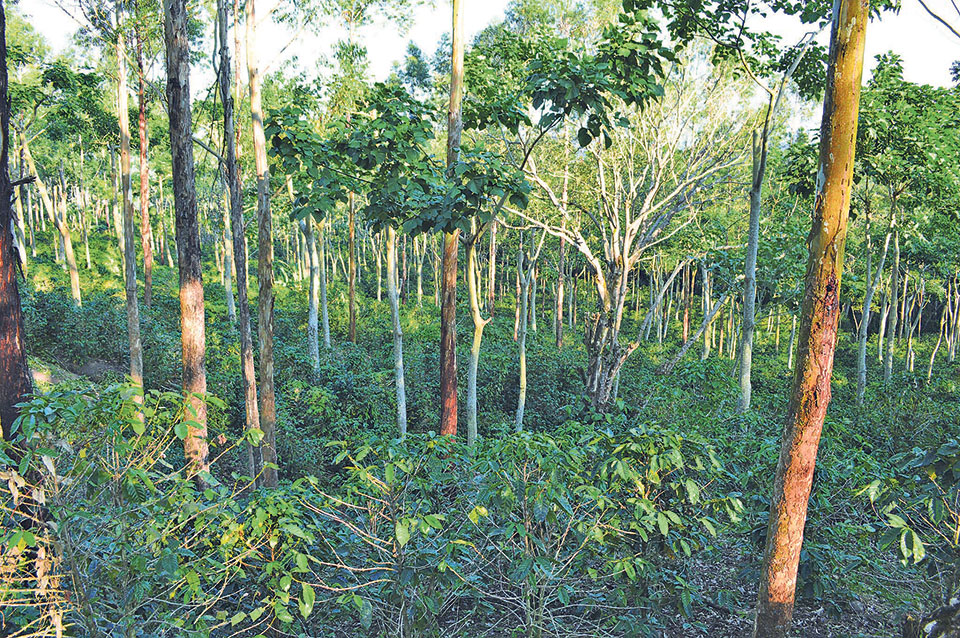
Agroforestry is a new name for the old set of practices followed by farmers since historical times. It is the process of cultivating trees and agricultural crops in intimate combination.
Agroforestry system involves two or more species of plants or animals, at least one of which is a Woody perennial. Compared to traditional agriculture and forestry systems agroforestry provides a complementarity between trees and crops and effectively exploites the available resources.
Agroforestry has considerable potential to improve agricultural production and maintain the overall productivity of the small upland farm, so it is becoming more popular in many parts of the world.
In Nepal agroforestry system has been adopted in Illam, Dhanusa, Bara, Rautahat Dhading Nuwakot districts.
Farmers have started agroforestry system by cultivating cash crops such as cardamom under Uttis, ginger and turmeric under tree shade, Home gardens, coffee under shade trees and vegetables and fruits in combination for commercial purposes.
Recently a five year (2013-2018) Agroforestry and Community Forest research project funded by The Australian Centre for International Agriculture (ACIAR) has began to show the impact in Lamjung, Kaski, Kavrepalanchowk, and Sindupalchok districts. Previously agroforestry system in developing countries like ours was largely focused on contributing household income however now it has focused to contribute both livelihood improvement and climate change mitigation.
Agricultural lands are believed to be a major potential sink and could absorb large quantities of Carbon if trees are reintroduced to these systems and judiciously managed together with crops or animals. It has been shown that agroforestry systems have three to four times more biomass than traditional treeless cropping systems. Agroforestry often contributes to climate change mitigation through enhanced carbon sequestration and micro climate and macro-climate improvement.
The Carbon sequestration potential of agroforestry systems is estimated between 12 and 228 Mg ha−1 with a median value of 95 Mg ha−1. The trees plantation in agroforestry system area may increases the precipitation by 10 percent and reduces temperature up to3 to 8 degree celcious.
Agroforestry helps in biodiversity conservation and controlling air pollution that also helps to strengthen the system’s ability to cope with adverse climatic condition.
It has been reported that one hectare of the close forest can filter the 50 tons of dusts and dirt. Agroforestry system helps in improvement of biodiversity by permitting a synergistic improvement, by the integrated protection of crops by their association with trees, in a promising way.
Thus, agroforestry is receiving wider recognition not only in terms of agricultural productivity but also in issues related to climate change. Especially in recent years, poor smallholder farmers are turning to agroforestry as a mean to adapt to the impacts of climate change.
The tree ameliorate the effects of climate change by helping to stabilize soil, wind and water erosion in prone areas as well as improves water and soil quality. It also provides yields of fruit, tea, coffee, oil, fodder and medicinal products in addition to their usual harvest. Traditional agroforestry mostly seen in the midhills of Nepal should be changed towards the commercialization for the poverty alleviation and climate change mitigation.
Samita is a Bsc graduate in agriculture from Lamjung Campus.


Leave A Comment